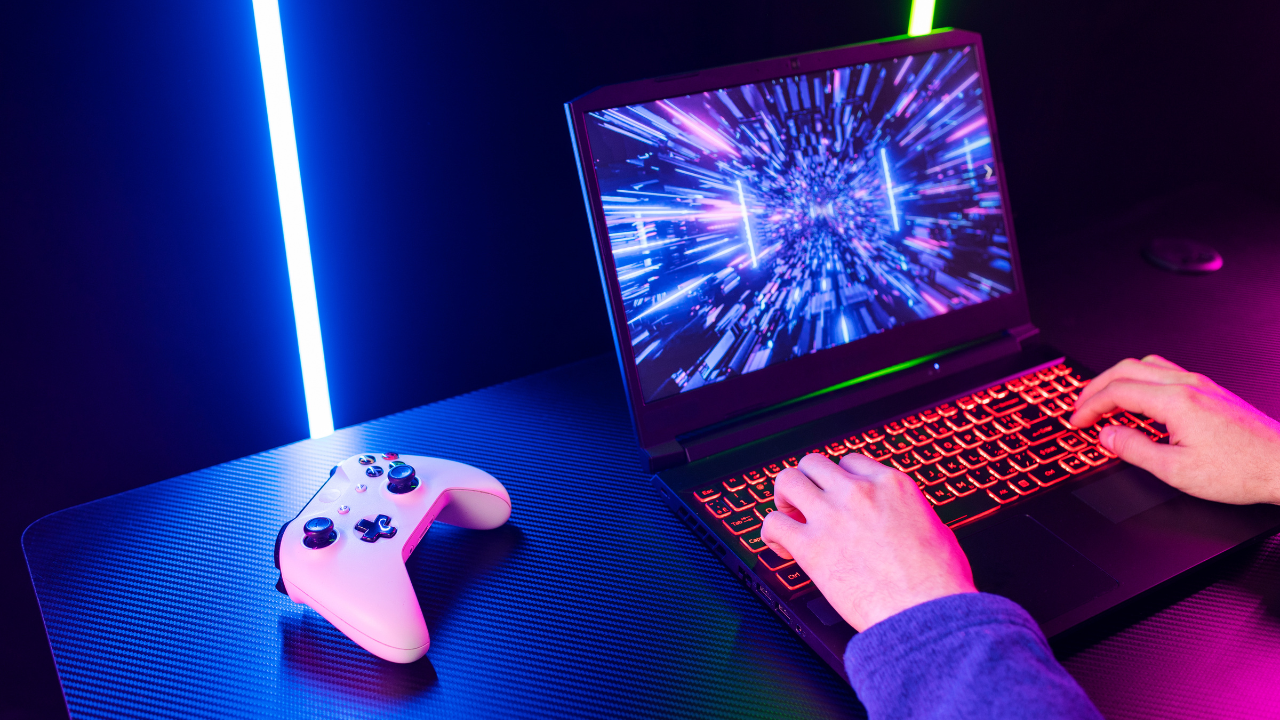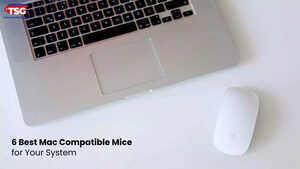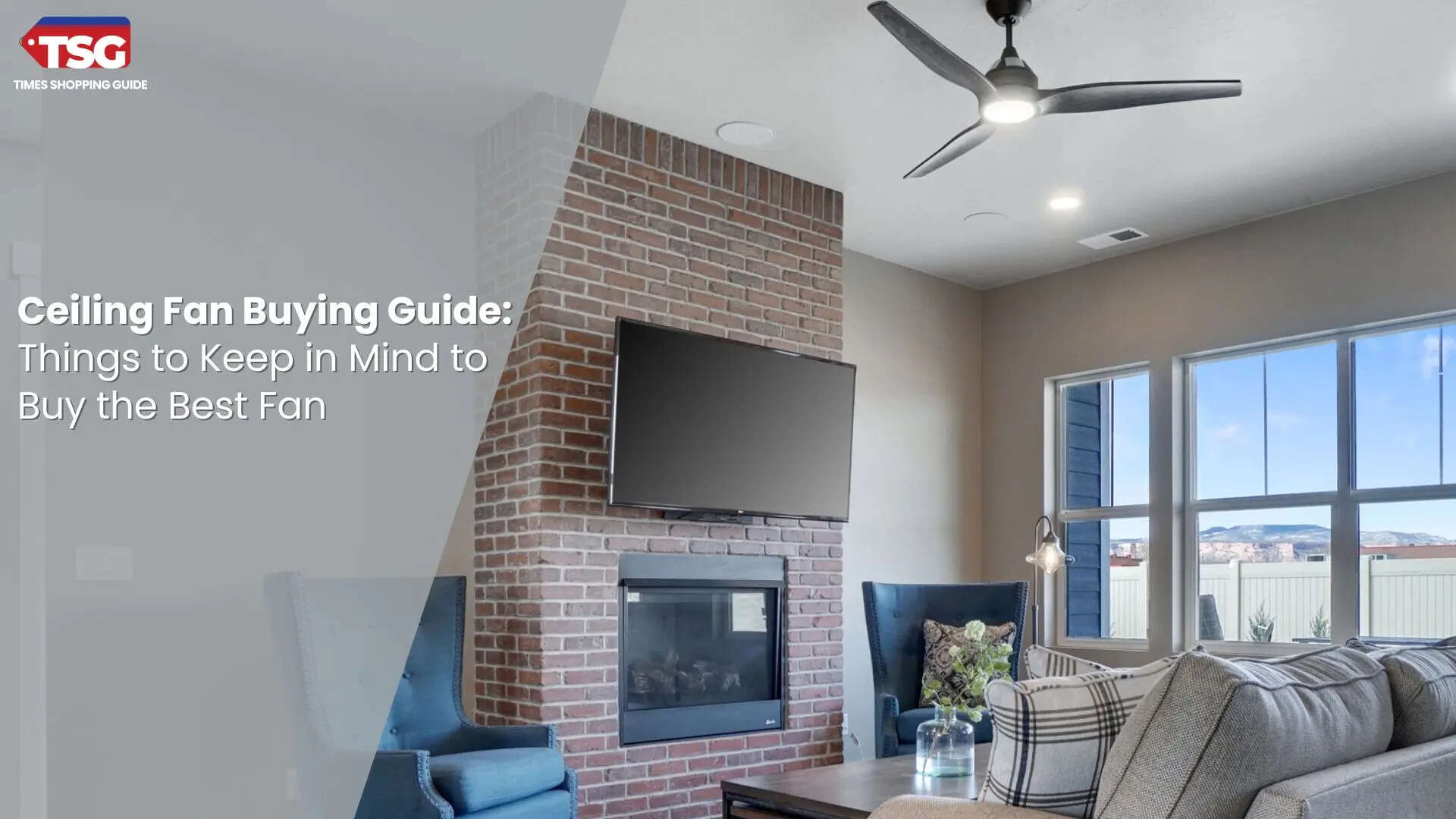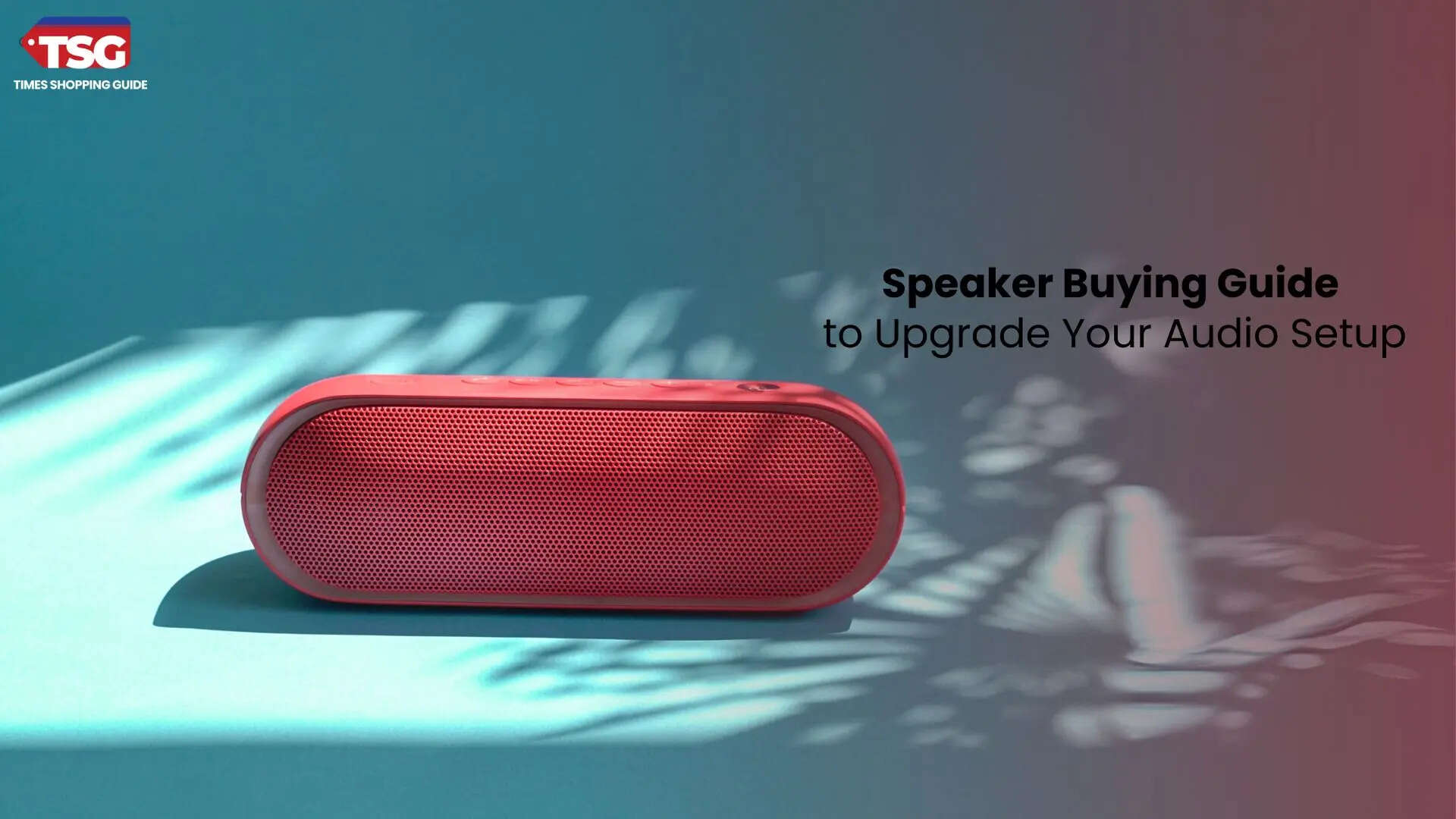- home
- electronics
- buying guides
- buying guide for gaming laptop enhance your gaming experience
Buying Guide for Gaming Laptop: Enhance Your Gaming Experience
Are you new to the world of gaming and want to explore which laptop you should go for? Or are you someone who has been into gaming for a while but is unsure which laptop to go for next? Then worry no more, as here is a buying guide to help you make the smart decision. Get ready to experience a whole new world of gaming.

While you’re getting ready to buy a laptop, it’s important to consider your budget as well. When you set a budget, it helps you prioritize features that you require the most. So, rather than getting tempted by several additional features with a set parameter, you’ll be able to pick a laptop that will satisfy all your requirements. Now, let’s talk all the key aspects that you just know before you buy a gaming laptop.
Types of gaming laptops
There are 3 main categories of gaming laptops: Budget-friendly, Midrange, and Premium.
Budget-friendly
When it comes to low-budget laptops, they are great for all casual gamers who want to play old-title games. The laptops that fall under this category usually use less powerful graphics cards, such as the GTX 1650 or AMD RX 5600M, and similarly less powerful CPUs, such as the Intel Core i5-11300H or AMD Ryzen 5 5600H. These laptops also come with lower-quality screens, such as 1080p resolution with 60Hz refresh rates. While it may not be the flashiest screen quality, it gives you a clear picture so that you can enjoy gaming. In India, budget-friendly laptops usually fall under the range of Rs. 80,000. So, if you are looking for a way to get into the gaming world without heavily investing in it, then a laptop that falls under this bracket is the right choice for you.
Midrange
Next up, we have midrange; this category is great for most gamers. It provides you with great performance at a good price. The laptops that fall under this range can handle most modern games at a high setting; however, great resolution can sacrifice some performance. It will have mid-range graphics cards, such as the RTX 3060 or AMD RX 6600M, and CPUs like the Intel Core i7-12700H or AMD Ryzen 7 6800H. These laptops will have high-quality screens, such as 1080p resolution with 144Hz refresh rates or 1440p resolution with 60Hz refresh rates. Offering you a smooth and visually impressive experience, these laptops make a great choice for most gamers. It is an excellent mix of raw power and affordability, and these laptops usually fall between Rs. 80,000 and Rs. 1,50,000.
Premium
If you are a hardcore gamer, then laptops that fall under this category are the right pick for you. These laptops are made for all those who want great performance with cutting-edge visuals. Laptops that fall under this category can handle games at their highest settings, providing you with smooth performance at high resolution. It often includes high-end graphics cards like the RTX 3080 or AMD RX 6800M, as well as powerful CPUs like the Intel Core i9-12900H or AMD Ryzen 9 6900HX. Providing you with the most advanced screens, these laptops offer 1440p resolution with high refresh rates or even 4K resolution with G-SYNC or FreeSync support. So, prepare to be blown away, as these laptops are on the next level. They usually range more than Rs. 1,50,000.
Key features to consider
Besides, the performance of a gaming laptop not only plays a crucial role bnut also one of the major deciding.. No one wants to spend so much money on one only for it to not perform as well as one would have expected. Here is what you should look for:
Processor (CPU)
The brain of the computer is responsible for handling game logic and multitasking. To get good gaming performance, go for a computer with an Intel Core i5 or AMD Ryzen 5 processor. Go for an Intel Core i7 or AMD Ryzen 7 processor if you want better gaming and futureproofing.
Graphics Card (GPU)
It is an electronic circuit that can perform mathematical calculations at high speed. It is responsible for rendering in-game visuals. If you are looking for a smooth gaming experience and fantastic visual quality, then a powerful GPU is extremely essential. Go for Nvidia RTX 3060 or AMD RX 6600M for midrange and RTX 3080 or RX 6800M for premium. And look for Nvidia GTX 1650 or AMD RX 5600M in the budget-friendly range.
Random Access Memory (RAM)
It helps enhance the system’s responsiveness and improves frame rates as compared to systems with less memory. For a smooth gaming experience, you should go for a laptop with a minimum of 8GB RAM. 16GB is recommended for multitasking and futureproofing.
Display Quality:
A laptop with good display quality helps you fully immerse yourself into the gaming world. It gives you amazing visuals with great attention to detail, which makes the game worth playing. Here is what you should look for:
Resolution
Resolution determines how crisp and detailed the image is going to be. 1080p is the standard resolution for most gaming laptops and is a good mix between performance and image quality. 1440p offers sharper visuals as compared to 1080p although it means you’ll need a powerful graphic card to have smooth frame rate at high settings. 4K offers excellent details and stunning visuals but it also impacts the battery life of your laptop.
Refresh Rate
Refresh rate refers to the number of times the image on the screen refreshes per second. It is measured in Hertz and a higher refresh rate gives you better visuals, especially in the case of fast-paced games. When we talk about refresh rates 60 Hz is the standard refresh rate for most non-gaming laptops. 120 Hz is slightly better as it provides you with smoother visuals and is a great option for occasional gamers. 144Hz is common amongst most midrange gaming laptops. It is ideal for fast-paced and competitive games, which require fast response. 240Hz and above is found in most premium gaming laptops.
Storage:
When we talk about storage it is good to maintain a balance between speed and capacity. Solid State Drives (SSDs) provide fast loading time for games and improve overall responsiveness. Whereas Hard Disk Drives (HDDs) provide more storage as compared to SSD but are much slower, so it will take longer for your game to load. So, if you are a hardcore gamer then invest in a large SSD or combine a smaller SSD with a large HDD for additional storage.
Keyboard:
A keyboard and trackpad are a must to get a smooth gaming experience. It is ideal to get a comfortable keyboard with good key travel and backlighting as it increases accuracy and provides visibility in low-lit rooms.
Cooling System:
Gaming laptops generate a lot of heat, especially while playing a heavy game file. A good cooling system ensures that your laptop doesn’t overheat, as that can result in your laptop getting damaged. It is recommended to look for a laptop that has multiple heat pipes and fans to displace heat effectively.
Battery Life:
Battery life is a huge issue when it comes to gaming laptops because, more often than not, these games drain the battery of your laptop. So, it is recommended to consider a laptop that has good battery life, as no one wants their laptop to die right in the middle of a game.
Brand and Warranty:
Brand and warranty are very important. Go for a brand that is known for producing good-quality laptops. Also, look for a brand that has good customer service and a warranty. A good warranty lets you know that your laptop can be repaired easily without any issues for a period of time.
Upgradability:
While considering all of this, you should also think about the upgradeability. Go for a laptop that can be upgraded later to increase its lifespan and usability. Go for a laptop where you can easily change the RAM and storage drive; this helps you extend the lifespan of your laptop so that it can change along with your gaming needs, which allows you to use it for longer rather than getting a brand-new system.
Choosing a gaming laptop can be a little difficult, but using this guide, you can find one that is perfect for you. Set a budget and go for a laptop that has a good processor. Consider its display quality, resolution, and refresh rate. Pick one that has good storage, so you can easily download all your gaming files without having to worry about running out of space. Also keep in mind the cooling system and battery life of your laptop. Lastly, choose a brand that has a great reputation for producing quality gaming laptops and that provides you with a good warranty and even better customer service.
Brands to consider
When it comes to gaming laptops, there are so many brands available that it is very easy to get confused about which one to choose. Here are some of the best gaming laptop brands that are great for all the gamers out there:
Asus ROG
Asus ROG is a huge name in the gaming community. They offer a wide selection of gaming laptops that meet various needs and demands when it comes to gaming. Having gone through a series of durability tests, these laptops ensure reliability and meet high gaming standards. Their ROG GX Series gaming laptops provide cutting-edge, gamer-centric innovation that meets the requirements of most hardcore gamers. The company pays great attention to display quality, their ROG G Series gaming laptops strike a perfect balance between power and beauty. Made for core gaming, these laptops deliver premium performance and are equipped with unique features that help gamers dominate their game.
Lenovo
Lenovo’s Legion gaming laptops are known for their quality performance. To make gaming a joyful experience Lenovo came up with their Lenovo Legion laptops. Designed for gamers, by gamers. These laptops have something for every gamer, from VR-ready models to rigs for e-sport gamers they have affordable laptops for everyone. It comes with features like RGB backlit keyboards, variable screen refresh rates, DDR5 memory, and an unrivaled NVIDIA graphics card, this laptop is a great pick for all the gamers out there.
MSI
MSI gaming laptops are well known for their performance, innovative features, and good-quality build. Often known for their powerful hardware configuration, these laptops are made utilizing high-quality material and are available in sleek designs. Equipped with top-tier graphic cards, they are great for gamers who seek a laptop with a high-resolution display. These gaming laptops offer you advanced cooling systems, customizable RGB lighting, and high-refresh-rate displays, which provide you with a good gaming experience. You should consider gaming laptops from MSI, as they are famous for delivering cutting-edge laptops that meet the needs of all the gamers out there.
Conclusion
When it comes to gaming laptops, it can be a little difficult to find one that is perfect for you. There are so many things that need to be considered: budget, performance, display quality, and much more. Each gamer has different requirements, so it is essential to find a laptop that best caters to your needs. One that offers you a realistic gaming experience and helps enhance your overall performance.
If you’re still not sure about which gaming laptop to go for, here is a list of some of the best gaming laptops that will be perfect for you:
- Acer Nitro V 13th Gen Gaming Laptop
- Dell G15-5530 Gaming Laptop
- MSI GF63 Thin Gaming Laptop
- Lenovo IdeaPad Gaming Laptop
- HP Victus Gaming Laptop
- Lenovo Legion 5 Pro Gaming Laptop
- ASUS TUF Gaming Laptop
FAQs
What is the main use of a gaming laptop?
The main function of any gaming laptop is to provide users with a device that gives them high-performance hardware that allows them to run domain-specific games smoothly and effortlessly. Gaming laptops are designed to provide gamers with enough power to run high-end games with high-quality graphics and good processing speed. These laptops often include a powerful CPU, a good-quality GPU, and a good amount of RAM to ensure a smooth gaming experience. These laptops also come with high-resolution displays that provide you with crisp and clear image quality for realistic gameplay.
Can you use normal laptops for gaming?
Yes, you can use normal laptops for gaming; however, it will not give you as smooth of an experience as you would get using a gaming laptop. For playing games, your laptop will need a powerful CPU and GPU and lots of RAM that will be able to support the games that you will be playing, which most of the time cannot be attained using a normal laptop. Thus, if you want to experience top-quality gaming, then it is recommended to get a gaming laptop.
Is 16 GB RAM good for gaming laptops?
16GB of RAM is more than enough to run any recent AAA game or any other game, as a matter of fact. It will also most likely keep your future-proof for another 3 to 4 years. Although you may need to change it sooner rather than later because some modern games are becoming more demanding in terms of resources and will need more than 16GB of RAM for smoother gaming functions.
Disclaimer: Times Shopping Guide is committed to bringing you the latest products from the best brands. Our selection is based on market research and positive consumer feedback. Times Shopping Guide is also a part of an affiliate partnership. In line with this, we may receive a portion of the revenue from your purchases. Please note that the product prices are subject to change based on the retailer's deals.












